Fleurs du Mal Magazine


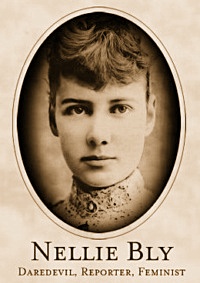 Ten Days in a Mad-House
Ten Days in a Mad-House
(Chapter II: Preparing for the ordeal)
by Nellie Bly
BUT to return to my work and my mission. After receiving my instructions I returned to my boarding-house, and when evening came I began to practice the role in which I was to make my debut on the morrow. What a difficult task, I thought, to appear before a crowd of people and convince them that I was insane. I had never been near insane persons before in my life, and had not the faintest idea of what their actions were like. And then to be examined by a number of learned physicians who make insanity a specialty, and who daily come in contact with insane people! How could I hope to pass these doctors and convince them that I was crazy? I feared that they could not be deceived. I began to think my task a hopeless one; but it had to be done. So I flew to the mirror and examined my face. I remembered all I had read of the doings of crazy people, how first of all they have staring eyes, and so I opened mine as wide as possible and stared unblinkingly at my own reflection. I assure you the sight was not reassuring, even to myself, especially in the dead of night. I tried to turn the gas up higher in hopes that it would raise my courage. I succeeded only partially, but I consoled myself with the thought that in a few nights more I would not be there, but locked up in a cell with a lot of lunatics.
The weather was not cold; but, nevertheless, when I thought of what was to come, wintery chills ran races up and down my back in very mockery of the perspiration which was slowly but surely taking the curl out of my bangs. Between times, practicing before the mirror and picturing my future as a lunatic, I read snatches of improbable and impossible ghost stories, so that when the dawn came to chase away the night, I felt that I was in a fit mood for my mission, yet hungry enough to feel keenly that I wanted my breakfast. Slowly and sadly I took my morning bath and quietly bade farewell to a few of the most precious articles known to modern civilization. Tenderly I put my tooth-brush aside, and, when taking a final rub of the soap, I murmured, “It may be for days, and it may be–for longer.” Then I donned the old clothing I had selected for the occasion.
I was in the mood to look at everything through very serious glasses. It’s just as well to take a last “fond look,” I mused, for who could tell but that the strain of playing crazy, and being shut up with a crowd of mad people, might turn my own brain, and I would never get back. But not once did I think of shirking my mission. Calmly, outwardly at least, I went out to my crazy business.
I first thought it best to go to a boarding-house, and, after securing lodging, confidentially tell the landlady, or lord, whichever it might chance to be, that I was seeking work, and, in a few days after, apparently go insane. When I reconsidered the idea, I feared it would take too long to mature. Suddenly I thought how much easier it would be to go to a boarding-home for working women. I knew, if once I made a houseful of women believe me crazy, that they would never rest until I was out of their reach and in secure quarters.
From a directory I selected the Temporary Home for Females, No. 84 Second Avenue. As I walked down the avenue, I determined that, once inside the Home, I should do the best I could to get started on my journey to Blackwell’s Island and the Insane Asylum.
Ten Days in a Mad-House
(Chapter II: Preparing for the ordeal)
by Nellie Bly (1864 – 1922)
fleursdumal.nl magazine
More in: Archive A-B, Bly, Nellie, Nellie Bly, Psychiatric hospitals

Guillaume Apollinaire
(1880 – 1918)
Je t’adore mon Lou
Je t’adore mon Lou et par moi tout t’adore
Les chevaux que je vois s’ébrouer aux abords
L’appareil des monuments latins qui me contemplent
Les artilleurs vigoureux qui dans leur caserne rentrent
Le soleil qui descend lentement devant moi
Les fantassins bleu pâle qui partent pour le front pensent à toi
Car ô ma chevelue de feu tu es la torche
Qui m’éclaire ce monde et flamme tu es ma force
Dans le ciel les nuages
Figurent ton image
Le mistral en passant
Emporte mes paroles
Tu en perçois le sens
C’est vers toi qu’elles volent
Tout le jour nos regards
Vont des Alpes au Gard
Du Gard à la Marine
Et quand le jour décline
Quand le sommeil nous prend
Dans nos lits différents
Nos songes nous rapprochent
Objets dans la même poche
Et nous vivons confondus
Dans le même rêve éperdu
Mes songes te ressemblent
Les branches remuées ce sont tes yeux qui tremblent
Et je te vois partout toi si belle et si tendre
Les clous de mes souliers brillent comme tes yeux
La vulve des juments est rose comme la tienne
Et nos armes graissées c’est comme quand tu me veux
Ô douceur de ma vie c’est comme quand tu m’aimes
L’hiver est doux le ciel est bleu
Refais-me le refais-me le
Toi ma chère permission
Ma consigne ma faction
Ton amour est mon uniforme
Tes doux baisers sont les boutons
Ils brillent comme l’or et l’ornent
Et tes bras si roses si longs
Sont les plus galants des galons
Un monsieur près de moi mange une glace blanche
Je songe au goût de ta chair et je songe à tes hanches
À gauche lit son journal une jeune dame blonde
Je songe à tes lettres où sont pour moi toutes les nouvelles du monde
Il passe des marins la mer meurt à tes pieds
Je regarde ta photo tu es l’univers entier
J’allume une allumette et vois ta chevelure
Tu es pour moi la vie cependant qu’elle dure
Et tu es l’avenir et mon éternité
Toi mon amour unique et la seule beauté
Guillaume Apollinaire Poèmes à Lou
fleursdumal.nl magazine
More in: #Archive Concrete & Visual Poetry, *War Poetry Archive, Apollinaire, Guillaume, Archive A-B
Jean Tinguely – Machinespektakel
Grootste overzicht ooit in Nederland van veelzijdige avant-gardekunstenaar
Stedelijk Museum Amsterdam
1 oktober 2016 – 5 maart 2017
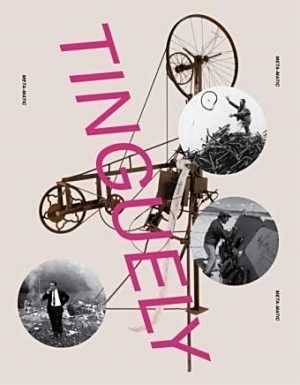 De Zwitserse kunstenaar Jean Tinguely (1925 – 1991) staat bekend om zijn speelse, stoere machinekunst en explosieve performances. Alles moest anders, alles moest in beweging. Precies 25 jaar na zijn dood presenteert het Stedelijk vanaf 1 oktober een retrospectief van Tinguely: de grootste tentoonstelling van deze kunstenaar ooit in Nederland. Door middel van meer dan honderd, merendeels werkende machinesculpturen, films, foto’s, tekeningen en archiefmateriaal, maakt de bezoeker op chronologische en thematische wijze kennis met Tinguely’s artistieke ontwikkeling en motieven; zoals zijn voorliefde voor absurd spel en zijn fascinatie voor destructie en vergankelijkheid
De Zwitserse kunstenaar Jean Tinguely (1925 – 1991) staat bekend om zijn speelse, stoere machinekunst en explosieve performances. Alles moest anders, alles moest in beweging. Precies 25 jaar na zijn dood presenteert het Stedelijk vanaf 1 oktober een retrospectief van Tinguely: de grootste tentoonstelling van deze kunstenaar ooit in Nederland. Door middel van meer dan honderd, merendeels werkende machinesculpturen, films, foto’s, tekeningen en archiefmateriaal, maakt de bezoeker op chronologische en thematische wijze kennis met Tinguely’s artistieke ontwikkeling en motieven; zoals zijn voorliefde voor absurd spel en zijn fascinatie voor destructie en vergankelijkheid
Te zien zijn de vroege draadsculpturen en reliëfs waarmee hij de abstracte schilderijen van kunstenaars als Malevich, Miró en Klee nabootst en verandert door ze in beweging te zetten; de interactieve tekenmachines en wild dansende installaties van schroot, afval en gebruikte kledingstukken; en zijn strakke, militaristisch aandoende zwarte sculpturen.
-Primeur: monumentale Mengele-Totentanz voor het eerst te zien in Nederland
De tentoonstelling besteedt veel aandacht aan Tinguely’s zelfdestructieve performances. De enorme installaties die Tinguely tussen 1960-1970 maakte (Homage to New York, Etude pour une fin du monde No. 1, Study for an End of the World No. 2 en La Vittoria) hadden als doel zichzelf luidruchtig en spectaculair te vernietigen. Daarnaast worden de tentoonstellingen Bewogen Beweging (1961) en Dylaby (1962) die Tinguely in het Stedelijk Museum heeft georganiseerd belicht, net als zijn latere enorme sculpturen, HON – en katedral (1966), Crocrodrome (1977) en het spectaculaire Le Cyclop (1969–1994), dat buiten Parijs nog steeds te bezoeken is. Als sluitstuk van de tentoonstelling, en een Nederlandse primeur, wordt Tinguely’s monumentale Mengele-Totentanz (1986) gepresenteerd: een duistere installatie met schaduwspel, die Tinguely maakte naar aanleiding van een verwoestende brand waarvan hij ooggetuige was. Het werk is opgebouwd uit overblijfselen van de brand: verkoolde balken, landbouwmachines (van de firma Mengele) en dierenskeletten. Het resultaat is een gigantische memento mori, die ook verwijst naar de concentratiekampen van de Nazi’s. De bewegingen en hoge schelle geluiden zorgen voor een sacrale en macabere sfeer.
-Spel, interactie en spektakel!
Voor Jean Tinguely was zijn werk een verzet tegen de conventionele statische kunst(wereld); hij wilde spel en experiment voorop zetten. Voor hem hoefde de bezoeker niet meer in een steriele witte ruimte op afstand naar een verstild schilderij te kijken. Met zijn kinetische kunst zette hij zowel de kunst als de kunstgeschiedenis in beweging en verkende hij de grenzen tussen kunst en leven. Met zijn do-it-yourself tekenmachines bekritiseerde Tinguely de rol van de kunstenaar en de elitaire positie van kunst in de samenleving. Hij verwierp de uniciteit van ‘de hand van de kunstenaar’ door bezoekers zelf werken in elkaar te laten zetten.
Samenwerking stond centraal in zijn loopbaan: met kunstenaars als Daniel Spoerri, Niki de Saint Phalle (ook zijn echtgenote), Yves Klein, het ZERO-netwerk, maar ook met museumdirecteuren als Pontus Hultén, Willem Sandberg en Paul Wember. Tinguely speelde een belangrijke rol in deze netwerken, als leider, inspirator, en verbinder. Zijn charismatische, stoere persoonlijkheid en het eclatante succes waarmee hij zijn werk (en zichzelf) in de openbare ruimte presenteerde, droegen daar in belangrijke mate aan bij.
-Relatie met Amsterdam en het Stedelijk
Amsterdam heeft een dynamische geschiedenis met Tinguely. Vooral de mede door Tinguely samengestelde tentoonstellingen Bewogen Beweging (1961) en Dylaby (1962) in het Stedelijk Museum getuigen van het nauwe contact. Hij bracht niet alleen zijn kinetische Méta machines, maar ook zijn internationale avant-gardenetwerk naar Nederland en liet een blijvende indruk achter bij het publiek, dat deze experimentele tentoonstellingen in grote aantallen bezocht. Een innige band met Willem Sandberg, toenmalig directeur van het Stedelijk Museum, en curator Ad Petersen leidde tot verschillende retrospectieven en aankopen voor de collectie (dertien sculpturen, waaronder zijn beroemde tekenmachine Méta-Matic No. 10 uit 1959, Gismo uit 1960 en de enorme Méta II uit 1971).
# Meer info op website Stedelijk Museum Amsterdam
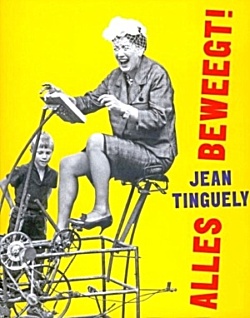 -Catalogus
-Catalogus
Bij de tentoonstelling verschijnt een catalogus, gebaseerd op meerjarig onderzoek van het Stedelijk Museum en Kunstpalast Düsseldorf, met essays van onder meer Margriet Schavemaker, Barbara Til en Beat Wismer.
Jean Tinguely – Machinespektakel
Grootste overzicht ooit in Nederland van veelzijdige avant-gardekunstenaar
1 oktober 2016 – 5 maart 2017
Stedelijk Museum
Postbus 75082
1070 AB Amsterdam
T +31 (0)20 5732 911
fleursdumal.nl magazine
More in: - Book News, Art & Literature News, FDM Art Gallery, Jean Tinguely & Niki de Saint Phalle, Sculpture
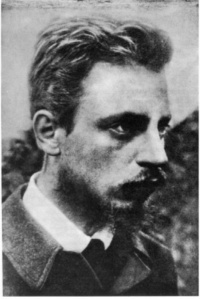
Rainer Maria Rilke
(1875 – 1926)
Saint Sulpice
Tout s’accorde parfaitement
avec cette ombre dévalant
de l’église haute;
ce fleuriste effacé
et l’étalage à côté
de la pâtisserie dévote.
Cet étalage pacifié,
plein d’innombrables objets pieux
entre Madeleine et Pacôme,
et le patron de ce même lieu
qui s’appelle Percepied
pour ne pas s’appeler Perce-paume.
Poèmes et Dédicaces (1920-1926)
Rainer Maria Rilke Gedichte
fleursdumal.nl magazine
More in: Archive Q-R, Rilke, Rainer Maria
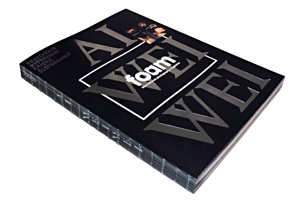 Foam Magazine #43: Ai Weiwei – Freedom of Expression under Surveillance
Foam Magazine #43: Ai Weiwei – Freedom of Expression under Surveillance
Foam is proud to launch the brand new and unique Foam Magazine, which was made in close collaboration with world-renowned Chinese contemporary artist and activist Ai Weiwei (1957, Beijing). Weiwei is guest editor for this issue that is entirely dedicated to the theme ‘Freedom of Expression under Surveillance’. Ai Weiwei himself is the central point of the magazine, as an artist under constant surveillance by the Chinese government. The magazine contains images he made while documenting his life by using Instagram and webcams, but also pays attention to Ai Weiwei’s constant endeavour to keep a sharp eye on the ones surveilling him.
 Freedom of Expression under Surveillance
Freedom of Expression under Surveillance
Containing an interview with, and quotes by the artist Foam Magazine #43 is divided into four parts: ‘Sousveillance”, ‘Self Surveillance’, ‘Urban Surveillance’ and ‘Art and Surveillance’. It reports on the way the artist worked the last few years. Instagram and Twitter became the means by which Ai Weiwei shared virtually every aspect of his life with a steadily growing multitude of followers all over the world. Part of the issue shows a selection of the endless stream of images posted on Instagram by Ai Weiwei. In another part Weiwei shares stills from the ‘Weiweicam’ he directed at himself 24/7. Foam Magazine #43 documents crucial and highly eventful period in the life of one of the most important artists of our age.
About Ai Weiwei
Ai Weiwei is an influential Chinese contemporary artist and activist. As a political activist, he has been openly criticizing the Chinese Government’s stance on democracy and human rights. In 2011, following his arrest at Beijing Capital International Airport he was held for 81 days without any official charges being filed. Recently he had his passport returned to him and was given the opportunity to travel abroad. Among art works by Ai Weiwei are Fairytale (2007), produced for Documenta 12, and Sunflower Seeds, an installation in London’s Tate Modern in 2010. A major solo exhibition of his work is currently on show at the Royal Academy of Arts, London.
ISBN 9789491727825
Published December 2015
288 pages + 4 cover pages front + back
Printed on selected specialized paper
Swiss bound
300x230x25 mm
€22,50
# More information: www.foam.org
Photo Anton K. (FdM): Protest in Berlin, Linienstrasse, 2011
fleursdumal.nl magazine
More in: - Book News, Ai Weiwei, Art & Literature News, Art Criticism, MUSEUM OF PUBLIC PROTEST, Photography, REPRESSION OF WRITERS, JOURNALISTS & ARTISTS

Adele Schopenhauer
(1797 – 1849)
Könnt ich einmal, einmal nur
Könnt′ ich einmal, einmal nur
Deine klaren Augen sehen!
Still wollt′ ich dann weiter gehen
Und das Leben wieder lieben,
Keine Wolke sollte trüben
Mir der hellen Sterne Spur.
Könnt′ ich einmal, einmal nur,
Wie Du Dich mir hingegeben,
So Dein ganzes klares Leben
Einmal noch in′s Auge fassen
Still′ wollt′ ich Dich dann verlassen,
Nicht mehr folgen Deiner Spur!
Könnt′ ich einmal, einmal nur
Dir mein ganzes Lieben sagen!
Niemals wollt′ ich wieder klagen –
Und von all′ dem heißen Sehnen
Sollten weder Wort′ noch Thränen
Jemals zeigen eine Spur.
Adele Schopenhauer Gedichte
fleursdumal.nl magazine
More in: Archive S-T, CLASSIC POETRY
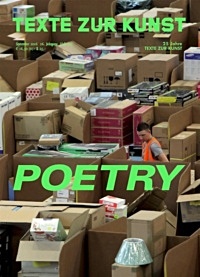 Issue No. 103
Issue No. 103
September 2016
„Poetry“
TZK #103 addresses “poetry,” a language form central to the recent shift toward affect in contemporary critical writing. Seeing the “artist-poet” as a vital site for the intersection of politics, affect, and digitality, we consider her voice and her currency from various perspectives, pro and con, across generations, analyzing her rising success, also asking what is gained and lost in this move from “rational” thought to what one feels? Scanning populist poetry, anarchist poetry, post-millennial net-poetry, the poetry of surplus-language and social media, the art historical poetic/poet-turned-object, and shades of fading Poesie, this issue, conceived by the editors with John Kelsey and Isabelle Graw explores how the seeming immediacy of #poetry and the suggestion of a hyper-personal voice correlates with current economic demand to claim visibility.
Issue No. 103 – September 2016 “Poetry”
Table of contents
Vorwort
7 Preface
36 Tim Griffin What Is Poetry?
42 Joshua Clover Objectively Speaking / Remarks on Subjectivity and Poetry
48 Isabelle Graw The Poet’s Seduction / Six Theses on Marcel Broodthaers’s Contemporary Relevance
74 Liz Kotz Word Pieces, Event Scores, Compositions
82 Monika Rinck The Promise of Poetic Language
88 Ada O’Higgins If you don’t like the reflection. Don’t look in the mirror. I don’t care.
94 Chris Kraus and Ariana Reines The feelings I Fail to capitalize, I fail / Chris Kraus and Ariana Reines in conversation on auto-fiction and biography
108 Felix Bernstein The Irreproachable Essay / On the Amazon Discourse of Hybrid Literature
122 Daniela Seel IMMEDIACY, I MEET WITH SKEPTICISM / Three questions for Daniela Seel
130 Micaela Durand DEVIL SHIT
134 Karolin Meunier Hearing Voices / On the reading and performance of poetry
148 Dena Yago Empire Poetry
Short Cut
169 Four Theses on Branding / David Joselit on Berlin Biennale 9
173 Mantras der Gegenwart / Hanna Magauer über Berlin Biennale 9
Rotation
177 Sehnsucht nach der verlorenen Stadt / Johannes Paul Raether über “spiritus” von Honey-Suckle Company
182 BENJAMIN BUCHLOH, ART HISTORIAN / Christine Mehring on Benjamin H. D. Buchloh’s “Formalism and Historicity: Models and Methods in Twentieth-Century Art”
187 Es war zweimal sagte sie / Vojin Sasa Vukadinovic über Eva Meyers „Legende sein“
191 Less is more? / John Miller on Justin Lieberman’s “The Corrector’s Custom Pre-Fab House”
96 So machen wir’s / Eva Geulen über „The Use of Bodies“ (Homo Sacer IV.2) von Giorgio Agamben
Short Waves
203 Gunter Reski über Victor Man bei MD 72, Berlin / Harry Burke on Dean Blunt at Arcadia Missa, London / Rhea Dall on Stephen G. Rhodes at Eden Eden, Berlin / Tobias Vogt über Thea Djordjadze bei Sprüth Magers, Berlin / Deanna Havas on Marc Kokopeli at Lomex, New York / Martin Herbert on Fredrik Værslev at Bergen Kunsthall, Norway
Reviews
222 Habeas Corpus / Simon Baier über Francis Picabia im Kunsthaus Zürich
227 Marcel Broodthaers, Art Historian’s Artist / Trevor Stark on Marcel Broodthaers at the Museum of Modern Art, New York
232 Malerei als soziales Handeln? / Christian Spies über Fernand Léger im Museum Ludwig, Köln
226 Simulierte Musealisierung / Philipp Kleinmichel über Isa Genzken im Martin-Gropius-Bau, Berlin
240 Elegance is Resistance / Stephanie LaCava on Lukas Duwenhögger at Artists Space, New York
Nachruf
245 TONY CONRAD (1949–2016) by Diedrich Diederichsen
247 Jay Sanders TONY CONRAD (1949–2016)
Edition
Martha Rosler
Amy Sillman
Amy Sillman
More issues:
Issue No. 103 / September 2016 “Poetry”
Issue No. 102 / June 2016 “Fashion”
Issue No. 101 / March 2016 “Polarities”
Issue No. 100 / December 2015 “The Canon”
Issue No. 99 / September 2015 “Photography”
Issue No. 98 / June 2015 “Media”
Issue No. 97 / March 2015 “Bohemia”
Issue No. 96 / December 2014 “The Gallerists”
Issue No. 95 / September 2014 “Art vs. Image”
Issue No. 94 / May 2014 “Berlin Update”
Issue No. 93 / March 2014 “Speculation”
Issue No. 92 / December 2013 “Architecture”
Issue No. 91 / September 2013 “Globalism”
Issue No. 90 / June 2013 “How we aim to work”
Issue No. 89 / March 2013 “Mike Kelley”
Issue No. 88 / December 2012 “The Question of Value”
Issue No. 87 / September 2012 “Conflict”
Issue No. 86 / June 2012 “The Curators”
Issue No. 85 / March 2012 “Art History Revisited”
Issue No. 84 / December 2011 “Feminism!”
Issue No. 83 / September 2011 “The Collectors”
Issue No. 82 / June 2011 “Artistic Research”
Issue No. 81 / March 2011 “Where do you stand, colleague ?”
Issue No. 80 / December 2010 “Political Art?”
Issue No. 79 / September 2010 “Life at Work”
Issue No. 78 / June 2010 “Fashion”
Issue No. 77 / March 2010 “Painting”
# More information on website Texte Zur Kunst
fleursdumal.nl magazine
More in: #Archive Concrete & Visual Poetry, Art & Literature News, Art Criticism, LITERARY MAGAZINES, MODERN POETRY, POETRY ARCHIVE, PRESS & PUBLISHING
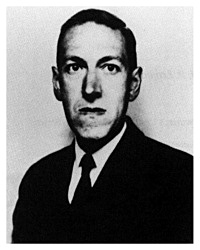 The Book
The Book
by H. P. Lovecraft
My memories are very confused. There is even much doubt as to where they begin; for at times I feel appalling vistas of years stretching behind me, while at other times it seems as if the present moment were an isolated point in a grey, formless infinity. I am not even certain how I am communicating this message. While I know I am speaking, I have a vague impression that some strange and perhaps terrible mediation will be needed to bear what I say to the points where I wish to be heard. My identity, too, is bewilderingly cloudy. I seem to have suffered a great shock—perhaps from some utterly monstrous outgrowth of my cycles of unique, incredible experience.
These cycles of experience, of course, all stem from that worm-riddled book. I remember when I found it—in a dimly lighted place near the black, oily river where the mists always swirl. That place was very old, and the ceiling-high shelves full of rotting volumes reached back endlessly through windowless inner rooms and alcoves. There were, besides, great formless heaps of books on the floor and in crude bins; and it was in one of these heaps that I found the thing. I never learned its title, for the early pages were missing; but it fell open toward the end and gave me a glimpse of something which sent my senses reeling.
There was a formula—a sort of list of things to say and do—which I recognised as something black and forbidden; something which I had read of before in furtive paragraphs of mixed abhorrence and fascination penned by those strange ancient delvers into the universe’s guarded secrets whose decaying texts I loved to absorb. It was a key—a guide—to certain gateways and transitions of which mystics have dreamed and whispered since the race was young, and which lead to freedoms and discoveries beyond the three dimensions and realms of life and matter that we know. Not for centuries had any man recalled its vital substance or known where to find it, but this book was very old indeed. No printing-press, but the hand of some half-crazed monk, had traced these ominous Latin phrases in uncials of awesome antiquity.
I remember how the old man leered and tittered, and made a curious sign with his hand when I bore it away. He had refused to take pay for it, and only long afterward did I guess why. As I hurried home through those narrow, winding, mist-choked waterfront streets I had a frightful impression of being stealthily followed by softly padding feet. The centuried, tottering houses on both sides seemed alive with a fresh and morbid malignity—as if some hitherto closed channel of evil understanding had abruptly been opened. I felt that those walls and overhanging gables of mildewed brick and fungous plaster and timber—with fishy, eye-like, diamond-paned windows that leered—could hardly desist from advancing and crushing me . . . yet I had read only the least fragment of that blasphemous rune before closing the book and bringing it away.
I remember how I read the book at last—white-faced, and locked in the attic room that I had long devoted to strange searchings. The great house was very still, for I had not gone up till after midnight. I think I had a family then—though the details are very uncertain—and I know there were many servants. Just what the year was, I cannot say; for since then I have known many ages and dimensions, and have had all my notions of time dissolved and refashioned. It was by the light of candles that I read—I recall the relentless dripping of the wax—and there were chimes that came every now and then from distant belfries. I seemed to keep track of those chimes with a peculiar intentness, as if I feared to hear some very remote, intruding note among them.
Then came the first scratching and fumbling at the dormer window that looked out high above the other roofs of the city. It came as I droned aloud the ninth verse of that primal lay, and I knew amidst my shudders what it meant. For he who passes the gateways always wins a shadow, and never again can he be alone. I had evoked—and the book was indeed all I had suspected. That night I passed the gateway to a vortex of twisted time and vision, and when morning found me in the attic room I saw in the walls and shelves and fittings that which I had never seen before.
Nor could I ever after see the world as I had known it. Mixed with the present scene was always a little of the past and a little of the future, and every once-familiar object loomed alien in the new perspective brought by my widened sight. From then on I walked in a fantastic dream of unknown and half-known shapes; and with each new gateway crossed, the less plainly could I recognise the things of the narrow sphere to which I had so long been bound. What I saw about me none else saw; and I grew doubly silent and aloof lest I be thought mad. Dogs had a fear of me, for they felt the outside shadow which never left my side. But still I read more—in hidden, forgotten books and scrolls to which my new vision led me—and pushed through fresh gateways of space and being and life-patterns toward the core of the unknown cosmos.
I remember the night I made the five concentric circles of fire on the floor, and stood in the innermost one chanting that monstrous litany the messenger from Tartary had brought. The walls melted away, and I was swept by a black wind through gulfs of fathomless grey with the needle-like pinnacles of unknown mountains miles below me. After a while there was utter blackness, and then the light of myriad stars forming strange, alien constellations. Finally I saw a green-litten plain far below me, and discerned on it the twisted towers of a city built in no fashion I had ever known or read of or dreamed of. As I floated closer to that city I saw a great square building of stone in an open space, and felt a hideous fear clutching at me. I screamed and struggled, and after a blankness was again in my attic room, sprawled flat over the five phosphorescent circles on the floor. In that night’s wandering there was no more of strangeness than in many a former night’s wandering; but there was more of terror because I knew I was closer to those outside gulfs and worlds than I had ever been before. Thereafter I was more cautious with my incantations, for I had no wish to be cut off from my body and from the earth in unknown abysses whence I could never return.
The Book (1933?)
by H. P. Lovecraft (1890 – 1937)
fleursdumal.nl magazine
More in: - Book Stories, Archive K-L, Lovecraft, H.P., Tales of Mystery & Imagination
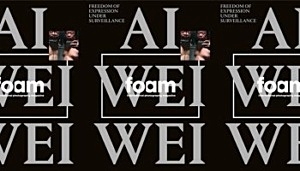 Ai Weiwei – #SafePassage
Ai Weiwei – #SafePassage
16 september – 7 december 2016
Dit najaar presenteert Foam #SafePassage, een tentoonstelling van het werk van de Chinese kunstenaar en activist Ai Weiwei (1957, Beijing). Omdat de kunstenaar zelf lange tijd constant in de gaten werd gehouden door de Chinese overheid, ervaart hij een persoonlijke verbondenheid met de groeiende stroom vluchtelingen die Europa probeert binnen te komen.
Sinds zijn eerste bezoek aan het Griekse eiland Lesbos, in december 2015, bezocht Ai Weiwei met zijn team tal van vluchtelingenkampen rond de Middellandse Zee, onder andere in Syrië, Turkije, Israël en Frankrijk. De tentoonstelling gaat over de strijd tussen het individu en de machtsstructuren die de samenleving domineren. Centraal staan zowel de ervaringen die Ai Weiwei ertoe hebben gebracht zijn vaderland te verlaten, als die van honderdduizenden vluchtelingen en migranten die hun leven blijven riskeren om Europa te bereiken, vaak met als enige resultaat dat zij voor gesloten grenzen komen te staan.
 Ai Weiwei
Ai Weiwei
Ai Weiwei, die als belangrijkste Chinese kunstenaar, ontwerper en curator van dit moment wordt beschouwd, is een vooraanstaand sociaal en cultureel commentator. Hij is een voorvechter van mensenrechten en democratie en levert onvermoeibaar en ongezouten kritiek op het politieke stelsel in China. Hij heeft herhaaldelijk onderzoek gedaan naar overheidscorruptie en doofpot affaires, waardoor hij een voortdurende doorn in het oog is van de Chinese autoriteiten. Na zijn arrestatie op de internationale luchthaven van Beijing in 2011 werd hij 81 dagen lang in het geheim gevangen gehouden, zonder dat er ooit officieel een aanklacht tegen hem was ingediend. Tijdens zijn gevangenschap werd hij continu verhoord en 24 uur per dag geobserveerd. Hij verkeerde in het gezelschap van twee bewakers die nooit van zijn zijde weken, zelfs niet als hij naar het toilet ging of sliep. Na zijn vrijlating werd zijn paspoort in beslag genomen en werd hij gedwongen om in te China blijven, waar de autoriteiten hem nauwlettend in de gaten bleven houden.
Tijdens de continue bewaking trachtte Ai Weiwei de situatie zoveel mogelijk in eigen hand te houden en zich op allerlei manieren te onttrekken aan de onophoudelijke inbreuken op zijn privacy. Hij startte een reeks experimenten, variërend van een livestream van zijn dagelijks leven via vier webcams in zijn atelier die wereldwijd kon worden bekeken op de website weiweicam.com, tot het bijhouden van een blog – totdat de overheid ingreep en hem beide mogelijkheden ontnam. Foam Magazine #43, dat in december 2015 verscheen, was volledig gewijd aan het thema ‘Freedom of Expression under Surveillance’ (‘vrijheid van expressie onder toezicht’). Ai Weiwei, die zelf als gastredacteur fungeerde en centraal stond in dit nummer, deed daarin uitgebreid verslag van deze belangrijke en donkere periode in zijn leven.
Tentoonstelling
De tentoonstelling begint met werken die een afspiegeling vormen van de persoonlijke ervaringen van de kunstenaar terwijl hij onder voortdurend toezicht stond, zoals is beschreven in Foam Magazine #43. In 2015 kreeg Ai uiteindelijk zijn paspoort terug. Kort daarna vertrok hij naar Europa en vestigde zich in Berlijn, waar hij nu zijn atelier heeft. Nog altijd hanteert hij de strategie van ultieme zelfbewaking, in de vorm van een vrijwel continue stroom beelden die hij op Instagram plaatst. Zo kan iedereen met een internetverbinding hem van dag tot dag volgen. Sinds zijn eerste bezoek aan het Griekse eiland Lesbos, in december 2015, fungeren zijn Instagram-beelden als een soort realtime nieuwsblog van de reizen van zijn team langs de vluchtelingenkampen in het Middellandse Zeegebied. Als tweede deel van de tentoonstelling worden de wanden van Foam vol gehangen met duizenden foto’s die hij met zijn mobieltje heeft gemaakt. Het zijn overwegend spontane kiekjes die een goede indruk geven van de leefomstandigheden in de kampen. Deze immense collage geeft uitdrukking aan de talloze persoonlijke ontmoetingen die de kunstenaar had met mensen in de vluchtelingenkampen, waardoor de omvang van de crisis nog eens pijnlijk wordt benadrukt. Ai Weiwei’s beelden gaan vergezeld van een selectie uit zijn inmiddels legendarische serie marmeren beelden en een aantal van zijn video’s, waaronder: Chang’an Boulevard (2004), dat een beeld schetst van de weg die Beijing langs een oost-west as in tweeën deelt en On the Boat (2016), waarin we de kunstenaar zien op een achtergelaten boot midden op de oceaan.
Ai Weiwei is vooral bekend om zijn sculpturen en omvangrijke installaties, waarmee hij conceptueel een verbinding legt tussen traditionele cultuurgebonden ambachten en hedendaagse politieke boodschappen. Daarbij brengt hij een relatie tot stand tussen historische wortels, materialen en paradigma’s, en actuele vraagstukken in onze moderne maatschappij. Ai heeft overal ter wereld grote tentoonstellingen en paviljoens ingericht, maar daarnaast is hij ook architect, schrijver, cineast, filosoof en politiek activist. Weiwei’s activiteiten zijn onlosmakelijk verbonden met de staat van de hedendaagse Chinese kunst en maatschappij – of het nu gaat om samenwerking met het Zwitserse architectenbureau Herzog & de Meuron, dat hij met artistieke adviezen terzijde stond bij de bouw van het nationale stadion van Beijing voor de Olympische Spelen van 2008, of om zijn onderzoek naar corruptie bij de Chinese overheid.
De tentoonstelling wordt geopend op donderdag 15 september, vanaf half 6, in het bijzijn van de kunstenaar.
Foam
Keizersgracht 609
1017 DS Amsterdam
+31 20 5516500
foam.org
# Meer informatie: www.foam.org
Photo Anton K. (FdM): Protest in Berlin, Linienstrasse, 2011
fleursdumal.nl magazine
More in: Ai Weiwei, Anton K. Photos & Observations, Art & Literature News, Exhibition Archive, MUSEUM OF PUBLIC PROTEST, Photography, REPRESSION OF WRITERS, JOURNALISTS & ARTISTS, Sculpture
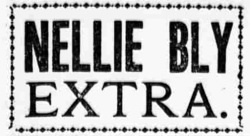 NEW YORK: IAN L. MUNRO, PUBLISHER, 24 AND 26 VANDEWATER STREET
NEW YORK: IAN L. MUNRO, PUBLISHER, 24 AND 26 VANDEWATER STREET
WHY ARE THE MADAME MORA’S CORSETS A MARVEL OF COMFORT AND ELEGANCE!?!
Try them and you will Find
WHY they need no breaking in, but feel easy at once.
WHY they are liked by Ladies of full figure.
WHY they do not break down over the hips, and
WHY the celebrated French curved band prevents any wrinkling or stretching at the sides.
WHY dressmakers delight in fitting dresses over them.
WHY merchants say they give better satisfaction than any others.
WHY they take pains to recommend them.
Their popularity has induced many imitations, which are frauds, high at any price. Buy only the genuine, stamped Madame Mora’s. Sold by all leading dealers with this GUARANTEE: that if not perfectly satisfactory upon trial the money will be refunded.
L. KRAUS & CO., Manufacturers, Birmingham, Conn.
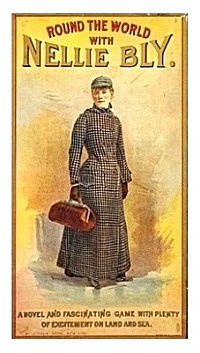
INTRODUCTION
SINCE my experiences in Blackwell’s Island Insane Asylum were published in the World I have received hundreds of letters in regard to it. The edition containing my story long since ran out, and I have been prevailed upon to allow it to be published in book form, to satisfy the hundreds who are yet asking for copies.
I am happy to be able to state as a result of my visit to the asylum and the exposures consequent thereon, that the City of New York has appropriated $1,000,000 more per annum than ever before for the care of the insane. So I have at least the satisfaction of knowing that the poor unfortunates will be the better cared for because of my work.
Ten Days in a Mad-House
(Chapter 1: A delicate mission)
by Nellie Bly
On the 22d of September I was asked by the World if I could have myself committed to one of the asylums for the insane in New York, with a view to writing a plain and unvarnished narrative of the treatment of the patients therein and the methods of management, etc. Did I think I had the courage to go through such an ordeal as the mission would demand? Could I assume the characteristics of insanity to such a degree that I could pass the doctors, live for a week among the insane without the authorities there finding out that I was only a “chiel amang ’em takin’ notes?” I said I believed I could. I had some faith in my own ability as an actress and thought I could assume insanity long enough to accomplish any mission intrusted to me. Could I pass a week in the insane ward at Blackwell’s Island? I said I could and I would. And I did.
 My instructions were simply to go on with my work as soon as I felt that I was ready. I was to chronicle faithfully the experiences I underwent, and when once within the walls of the asylum to find out and describe its inside workings, which are always, so effectually hidden by white-capped nurses, as well as by bolts and bars, from the knowledge of the public. “We do not ask you to go there for the purpose of making sensational revelations. Write up things as you find them, good or bad; give praise or blame as you think best, and the truth all the time. But I am afraid of that chronic smile of yours,” said the editor. “I will smile no more,” I said, and I went away to execute my delicate and, as I found out, difficult mission.
My instructions were simply to go on with my work as soon as I felt that I was ready. I was to chronicle faithfully the experiences I underwent, and when once within the walls of the asylum to find out and describe its inside workings, which are always, so effectually hidden by white-capped nurses, as well as by bolts and bars, from the knowledge of the public. “We do not ask you to go there for the purpose of making sensational revelations. Write up things as you find them, good or bad; give praise or blame as you think best, and the truth all the time. But I am afraid of that chronic smile of yours,” said the editor. “I will smile no more,” I said, and I went away to execute my delicate and, as I found out, difficult mission.
If I did get into the asylum, which I hardly hoped to do, I had no idea that my experiences would contain aught else than a simple tale of life in an asylum.
That such an institution could be mismanaged, and that cruelties could exist ‘neath its roof, I did not deem possible. I always had a desire to know asylum
life more thoroughly–a desire to be convinced that the most helpless of God’s creatures, the insane, were cared for kindly and properly. The many stories I
had read of abuses in such institutions I had regarded as wildly exaggerated or else romances, yet there was a latent desire to know positively.
I shuddered to think how completely the insane were in the power of their keepers, and how one could weep and plead for release, and all of no avail, if
the keepers were so minded. Eagerly I accepted the mission to learn the inside workings of the Blackwell Island Insane Asylum.
“How will you get me out,” I asked my editor, “after I once get in?”
“I do not know,” he replied, “but we will get you out if we have to tell who you are, and for what purpose you feigned insanity–only get in.”
I had little belief in my ability to deceive the insanity experts, and I think my editor had less.
All the preliminary preparations for my ordeal were left to be planned by myself. Only one thing was decided upon, namely, that I should pass under the pseudonym of Nellie Brown, the initials of which would agree with my own name and my linen, so that there would be no difficulty in keeping track of my
movements and assisting me out of any difficulties or dangers I might get into.
There were ways of getting into the insane ward, but I did not know them. I might adopt one of two courses. Either I could feign insanity at the house of friends, and get myself committed on the decision of two competent physicians, or I could go to my goal by way of the police courts.
Nellie practices insanity at home
On reflection I thought it wiser not to inflict myself upon my friends or to get any good-natured doctors to assist me in my purpose. Besides, to get to Blackwell’s Island my friends would have had to feign poverty, and, unfortunately for the end I had in view, my acquaintance with the struggling poor, except my own self, was only very superficial. So I determined upon the plan which led me to the successful accomplishment of my mission. I succeeded in getting committed to the insane ward at Blackwell’s Island, where I spent ten days and nights and had an experience which I shall never forget. I took upon myself to enact the part of a poor, unfortunate crazy girl, and felt it my duty not to shirk any of the disagreeable results that should follow. I became one of the city’s insane wards for that length of time, experienced much, and saw and heard more of the treatment accorded to this helpless class of our population, and when I had seen and heard enough, my release was promptly secured. I left the insane ward with pleasure and regret–pleasure that I was once more able to enjoy the free breath of heaven; regret that I could not have brought with me some of the unfortunate women who lived and suffered with me, and who, I am convinced, are just as sane as I was and am now myself.
But here let me say one thing: From the moment I entered the insane ward on the Island, I made no attempt to keep up the assumed role of insanity. I talked and acted just as I do in ordinary life. Yet strange to say, the more sanely I talked and acted the crazier I was thought to be by all except one physician, whose kindness and gentle ways I shall not soon forget.
Ten Days in a Mad-House
(Chapter 1: A delicate mission)
by Nellie Bly (1864 – 1922)
fleursdumal.nl magazine
More in: Archive A-B, Bly, Nellie, Nellie Bly, Psychiatric hospitals
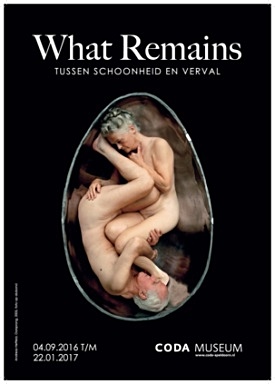
What Remains – tussen schoonheid en verval
04.09.2016 t/m 22.01.2017
De frictie tussen schoonheid en verval is door de eeuwen heen steeds weer in de kunst verbeeld. Uiteenlopende genres zoals het vanitasstilleven, het ‘schuldige’ landschap en het portret ontlenen hun aantrekkingskracht aan de ervaring van schoonheid in verval. Gastcurator Wim van der Beek maakte met het werk van 15 kunstenaars in opdracht van CODA directeur Carin Reinders een prikkelende en gevarieerde tentoonstelling die uiteenlopen aspecten van verval zichtbaar maakt.
De esthetiek van afval versus de grenzen van de consumptiemaatschappij, het hoopgevende zicht op nieuwe kansen of levensverlenging, de daklozenproblematiek; het is allemaal onlosmakelijk verbonden met de manier waarop we in de huidige samenleving omgaan met dat wat oud en versleten is of in de marge van de samenleving terechtgekomen is. De moderne samenleving worstelt met allerlei processen die samenhangen met de eindigheid van het leven en de periode van verval die daar aan voorafgaat. Beeldende kunstenaars confronteren de samenleving door andere perspectieven aan te reiken. Zij laten zien dat in verval ook schoonheid kan schuilen of ze vergroten het verval zo uit dat de confrontatie schrijnend en hard is. Een breed spectrum aan emoties wordt betrokken in het beeldvormingsproces: berusting, woede, angst, vertwijfeling, melancholie, weemoed en de worsteling met het besef van eindigheid.
De paradox van kunst en verval. What Remains maakt uiteenlopende aspecten van verval zichtbaar. Fysiek, mentaal, moreel, materieel, maatschappelijk, landschappelijk en architectonisch verval, veroudering en ouderdom, afval en hergebruik, natuurlijke afbraakprocessen, afgedankte voorwerpen en in de vergetelheid geraakte betekenissen en technieken komen in deze tentoonstelling aan de orde. De tentoonstelling in CODA Museum toont daarnaast dat beeldende kunst waarin vormen van verval gesublimeerd en vereeuwigd worden, verder gaat dan verval op zich. Hier doet zich namelijk een merkwaardige paradox voor: kunst waarin verval onderwerp is, kan eeuwigheidswaarde krijgen en ontworstelt zich daarmee aan de vergankelijkheid die de basis van het kunstwerk vormt. Wie bovendien verder kijkt dan het verval, kan schoonheid ontdekken en rust vinden. De bezoeker van What Remains kan echter niet om de dilemma’s heen die met verval en vergankelijkheid te maken hebben. Het besef dat er een rustgevende schoonheid kan uitgaan van verval biedt in elk geval een hoopgevend perspectief.
Deelnemende kunstenaars: Hugo Tieleman, Chris Jordan, Andreas Hetfeld, Ivo Kamphuis, Jan Eric Visser, Jehoshua Rozenman, Nicolas Dings, Jan Banning, Frans Beerens, Martine Feipel & Jean Bechameil, Yves Marchand & Romain Meffre, Ken’ichiro Taniguchi, Hans Op de Beeck, Sébastien van Malleghem.
CODA Bibliotheek
CODA Museum
CODA Archief & Kenniscentrum
Vosselmanstraat 299
7311 CL Apeldoorn
tel.: (055) 5268400
fleursdumal.nl magazine
More in: Art & Literature News, DICTIONARY OF IDEAS, Exhibition Archive, Galerie des Morts

William Shakespeare
(1564-1616)
Doubt
Doubt that the stars are fire;
Doubt that the sun doth move;
Doubt truth to be a liar;
But never doubt I love.
William Shakespeare, Hamlet, Act II, sc. 2
Shakespeare 400 (1616 – 2016)
fleursdumal.nl magazine
More in: Archive S-T, Shakespeare, William
Thank you for reading Fleurs du Mal - magazine for art & literature